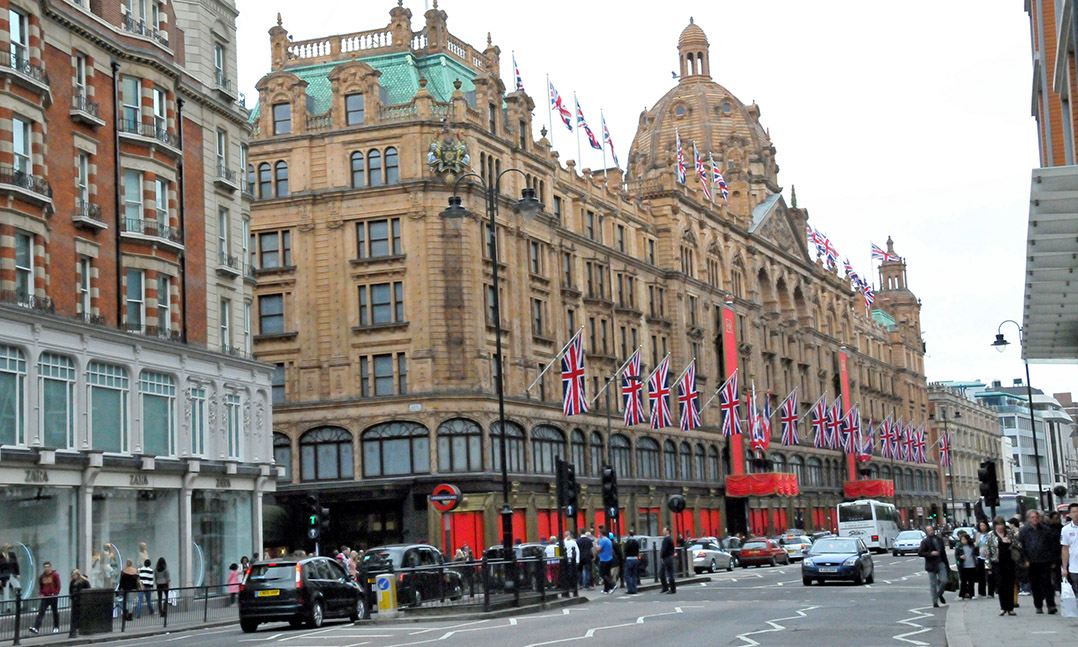Many visitors to London consider their trip complete only when they have obtained an iconic green bag from Harrods, the world’s most famous department store.
In 1849, Charles Henry Harrod, an East London wholesale grocer, opened a small retail store in Knightsbridge, then a village outside London. Selling fruit, vegetables, perfumes and medicine, he hoped to take advantage of the Crystal Palace Exhibition, the first World’s Fair, opening in nearby Hyde Park in 1851. The plan worked and both Knightsbridge and the store boomed. By 1881, “Harrod’s Store,” known for high-quality products and personalized service, had 100 employees. Richard Burbridge bought the store in 1894 and completely rebuilt it, installing London’s first moving staircase in 1898. Customers willing to ride the elegant new contraption were offered brandy and smelling salts at the top. The current domed building, encompassing 1.1 million square feet on seven floors, was completed in 1905.
Up to 300,000 people now visit Harrods each day, served by a staff of 5,000 from more than 50 nations. Reflecting the store’s motto, “Omnia, Omnibus, Ubique” (all things for all people, everywhere), 330 departments sell everything from pet food to important works of art. Food served at its 23 restaurants ranges from tapas to high tea. Among many attractions is the bank, where gold bars weighing 12.5 kilograms and marked with the Harrods name sell for more than $500,000. When Princess Diana and Dodi Fayed were killed in 1997, Fayed’s father, Mohamed Al-Fayed, owned Harrods and immediately created a memorial inside the store to the young couple. In 2005, he added a controversial bronze statue of them dancing, which he labelled “Innocent Victims.” Harrods’ current owner, Qatar Holdings, the sovereign wealth fund of Qatar, recently returned the statue to the Fayed family, hoping to regain the patronage of the royal family.





